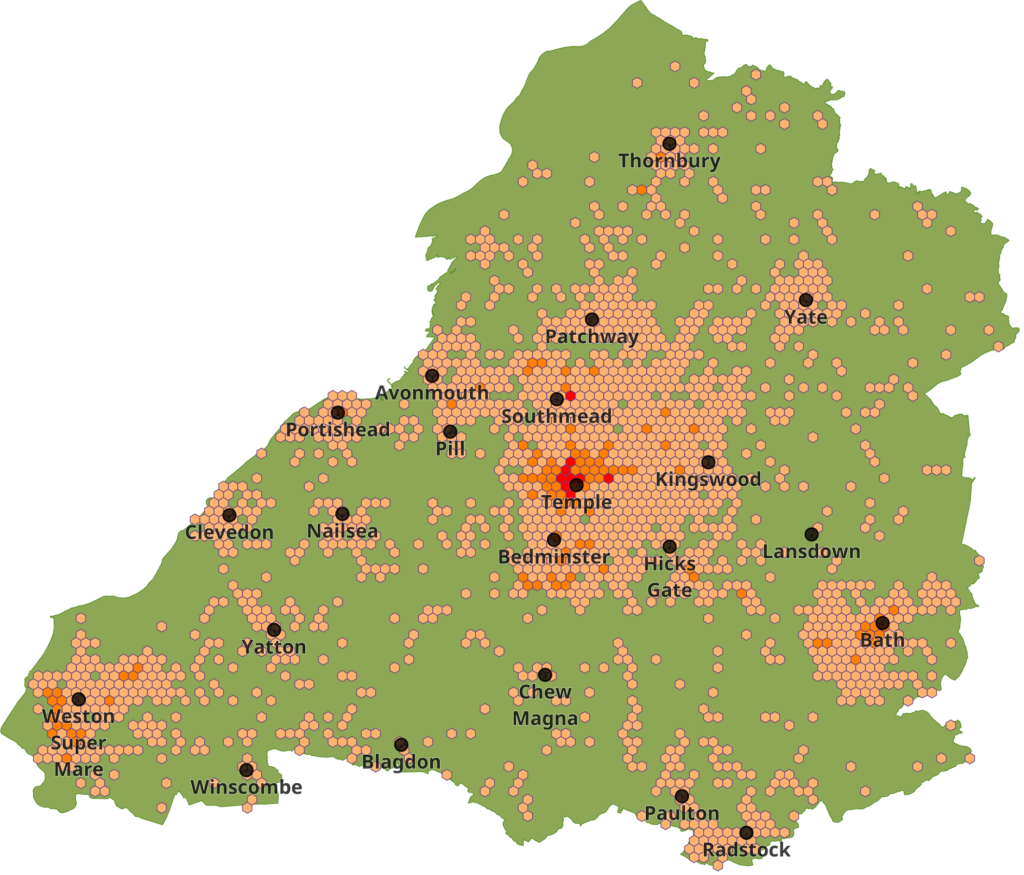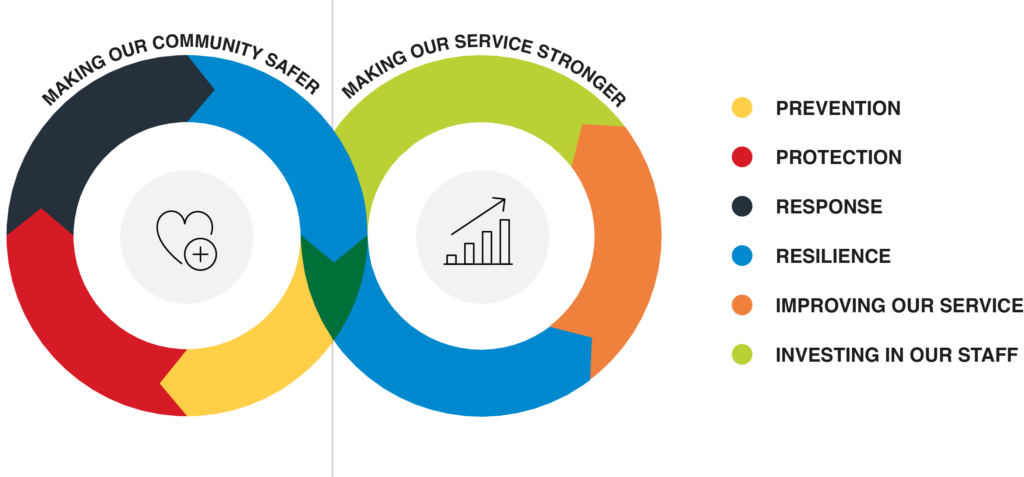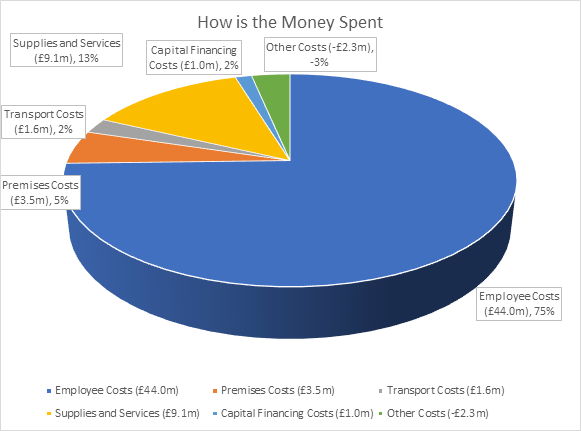Introduction
Our four-year Service Plan outlines our vision for the future of Avon Fire & Rescue Service and what we need to do to keep our communities safer and make our Service stronger.
The Plan is our commitment to our local communities and has been made with the help of local people, partners, and our staff. It includes not only looking at how we reduce risk across our Service area, but also how we ensure our Service is a great place to work.
Through our highly trained staff, we aim to provide the best fire, rescue and risk reduction services to our local communities, as well as being continually prepared to respond to the changing environment we face.
Our planning, research and data helps us understand who is most at risk from fire and other incidents. By understanding what our risks are we can ensure we have the right equipment and resources, in the right places, at the right time, being used to help those who need it most.
The services we provide are much more than 999 calls and emergency response, like our prevention and protection activities, which make people and businesses in the area safer and stronger.
The health and wellbeing of our local communities is important to us, by supporting those who are most vulnerable to lead healthier and safer lives, we are reducing harm and the risk of them needing us in an emergency.
We will engage with businesses to reduce the impact of false alarms, which gives us more time to focus on important risk reduction work and be ready and available to respond to more serious incidents.
We will work with our local authority partners to plan our response to large-scale building developments, to ensure we are keeping people safe in their homes and be there for you when you need us most.
Led by our data, we will capture important information about our Service area, to effectively manage operational and community risk and respond appropriately. This includes making sure we are well prepared and have the right equipment, expertise, training and skill sets to respond to emergencies quickly and safely.
Our core values we’ve created together are at the centre of everything we do, and we will support our people in being the best they can be to deliver the best possible service to our communities. Whilst working hard to create a welcoming, supportive and inclusive culture within the Service for everyone who works here.
Only by working together can we make our communities safer and our Service stronger.
Our Vision

To provide the highest standard and best value Service to the community.
We will work closely with and help make our diverse communities safer and healthier; while ensuring our Service is a great place to work, where everyone feels valued and can achieve their full potential.
Our Mission

To improve public safety through Prevention, Protection, Response and Resilience.
Making our communities safer, by being there when we are needed, identifying and reducing risks and improving the quality of life for local people; our staff working together as one to ensure a high-quality, value for money Service which meets the needs of the people we serve.
Our Values

Respectful
Honest
Courageous
Ambitious
Inclusive
Transparent
Guided by the standards of behaviour captured in our values, we will support our staff to embrace challenges, recognise achievements and live out our values in Making our Communities Safer and exceeding expectations. The public expect their emergency services to be there when they need us, but also role model the very best standards of behaviour. When we make decisions and work together, our values are the things we keep in mind every time. They are important to us and non-negotiable.
Our Values, Ethics and Behaviour Framework is aligned to the NFCC Core Code of Ethics.
Our Service
Avon Fire & Rescue Service delivers a wide range of fire, rescue and community safety services across our geographic area.
Avon Fire Authority, whilst complying with the Local Government Act 1999, ensures that the Service is continuously improving the way in which its functions are exercised, having regard to a combination of economy, efficiency and effectiveness. It is a locally accountable body made up of 20 Elected Members from the unitary authorities of Bath and North East Somerset (BANES), Bristol, North Somerset and South Gloucestershire, as well as the Avon and Somerset Police and Crime Commissioner, making 21 members in total.
In order to reduce the risk in our communities, we will ensure there are sufficient levels of staff and equipment available to provide an emergency response 24 hours a day, 365 days a year, as well as undertaking essential Prevention and Protection activity.
Acts of Parliament outline requirements for every fire and rescue service in England. In addition to this, the Home Office publishes the Fire and Rescue National Framework for England which provides guidance and priorities for fire and rescue services. As a public service, there are statutory, regulatory and compliance requirements from premises and procurement activities to ensuring cyber security accreditation and the health and safety of our staff.
 Mandatory functions and powers (things we must do)
Mandatory functions and powers (things we must do)
The promotion of fire safety; preparation for firefighting; protecting people and property from fires; rescuing people from road traffic collisions and responding to other emergencies, such as terrorist attacks.
 Discretionary functions (things we choose to do)
Discretionary functions (things we choose to do)
These are services we provide over and above those laid down in law. This includes activities like planning for and delivering rescues from water, the rescue of animals, responding to floods as well as certain education packages such as home and water safety advice to those most at risk in our communities. Our Service goes above and beyond legislative duties to put the interests of our local communities first in respect of wider public safety; being a role model in what we do, how we interact, and our approach to diversity and inclusion.
 Regulatory functions and powers
Regulatory functions and powers
We are responsible for undertaking fire safety inspections and audits, and on occasion we conduct prosecutions.
 Our key responsibilities are contained within;
Our key responsibilities are contained within;
- Fire and Rescue Services Act 2004
- Civil Contingencies Act 2004
- The Regulatory Reform (Fire Safety) Order 2005
- The Fire and Rescue Services (Emergencies) (England) Order 2007
- Fire and Rescue National Framework for England 2018
- Fire Safety Act 2021
- Building Safety Act 2022
Our area has a residential population of more than one million people living in over 480,000 homes, over an area of 512 square miles. Understanding our diverse population helps us deliver services tailored to their needs.
Analysis of our population can be found in our Strategic Assessment and Diversity, Cohension and Equality (DICE) Strategy.
Our Achievements
In 2024, our Service has achieved successes in many areas, including equality, diversity and inclusion, training, wellbeing, charity work and much more. Many of these achievements have been recognised with prestigious nominations and awards, reflecting the dedication, professionalism, and excellence of our teams.
We were delighted to be shortlisted for several national awards, including the National Safety and Health Practitioner (SHP) Awards, Excellence in Fire and Emergency Awards, Smarter Working Live Awards and we took home a public sector award at the prestigious CIR Risk Management Awards. Locally, the Service has been successfully awarded the High Sheriff’s Award in Bristol, and one Fire Safety Inspector was awarded the honour of Fellow of the Institute of Fire Engineers.
Wellbeing initiatives:
60 new Mental Health First Aiders were trained, making a significant impact on staff mental health support. The introduction of our in-house instructor made training more affordable, benefitting the Service long-term.
Equality, diversity and inclusion:
We supported over 80 campaigns and events in line with our commitment to equality, diversity and inclusion. We supported International Women’s Day by celebrating with an all-female fire crew at Bristol Women’s Voice and a female fitness event in Weston-super-Mare. Staff also participated in Pride events in Bristol and Bath, including hosting healthy-breakfasts and family-friendly activities. In Black History Month we partnered with the Bristol City Robins Foundation for a youth football tournament and a panel discussion on inclusivity.
Charitable efforts:
In 2024, our teams showed a remarkable commitment to charity, raising significant funds for various causes. Over £1,000 was raised through cycling events, while other efforts supported a Neater Arm Support System for a colleague and contributed to projects in Gambia, including the donation of retired fire engines. Additionally, more than 56 tonnes of clothing were diverted from landfill, raising £12,548 for The Fire Fighters Charity. Our staff also took part in numerous challenges, including hikes, climbs, and marathons, raising thousands for causes like Cancer Research UK, The Fire Fighters Charity, and local organisations supporting rough sleepers and the armed forces. These collective efforts demonstrate our team’s dedication to making a positive impact in the community and beyond.
Community engagement:
The Service hosted events such as Children’s Mental Health Week, 50th Anniversary celebrations at Police & Fire headquarters, and Thornbury Fire Station Open Day, engaging thousands with fire safety and wellbeing initiatives. We partnered with local groups like the Gypsy, Roma, and Traveller community for fire safety events, and celebrated local diversity with the Broadoak Festival of Culture.
Digital and sustainability achievements:
We launched our new website, which is more user-friendly and is an accessible platform for local people. Internally, the new Operational Guidance and Learning Platform for staff enhances staff development. We also launched a successful trial of Hydrotreated Vegetable Oil as a diesel alternative, showcasing our environmental commitment.
New facilities and training:
Bedminster Fire Station was refurbished, where staff have welcomed enhanced facilities while maintaining effective operations. Pill Fire Station has a new training tower and the state-of-the-art facility prides itself by being able to provide advanced training. Over the year, staff have taken part in multiple large-scale training exercises across the Service area, working hard to train and learn to ensure we are prepared to respond to incidents.
These achievements highlight the extraordinary dedication, professionalism, and community focus of our teams in 2024. From advancing wellbeing, championing diversity, and improving our environment to responding to challenging incidents with excellence, our Service continues to stand as a beacon of commitment to both our people and the communities we serve.
Our Performance
AF&RS continues to make excellent progress in reducing risk in our community by reducing the number and impact of incidents attended.
We have met the reduction targets for all our incident indicators and have improved on last year’s results. Each incident that is prevented represents a reduction of risk in our community.
We are committed to doing all that we can to make our community safer and our Service stronger. We continue to analyse our data to show us what additional interventions and initiatives we can take.
AF&RS measure response using a risk-based approach, ensuring that we respond quickest to incidents with the most risk. For each of our three response categories, we set a target based upon the average time from when we alert our appliances to when they arrive on scene, and we are pleased that we have met our target in each category.
Full information regarding our performance can be found in our latest Performance Report.
Service Planning
Our Service Plan, which incorporates our Community Risk Management Plan (CRMP), is developed through insight and data analysis which is used to understand our Service area and local communities.
We have a duty to identify and assess all foreseeable fire and rescue related risks through our community risk management planning process. To do this, we regularly conduct research and horizon scanning to understand potential threats to how the Service operates, and any emerging risks that may affect our communities.
Our subject matter experts assess emerging risks and plan appropriate Prevention, Protection and Response activities to reduce the potential impact of those risks. These mitigations are based on National Operational Guidance and backed up by data intelligence.
Existing risks are regularly reviewed against operational learning outcomes and our own incident data is analysed for patterns and trends.
Using our incident data, risk intelligence and modelling tools we can visualise where the greatest risks are within our Service area; overlaying the locations of our assets to decide how we strategically place and manage our resources to meet the risk profile.

The map is overlaid with a hexagonal grid showing incident hotspots recorded from 2018-2023. The incident hotspots are mainly centred around the population centres and our fire stations and frontline response assets are well positioned to respond.
Green: 0-low incident count
Light orange: low incident count
Dark orange: medium incident count
Red: higher incident count
We work with the local resilience forum, other emergency services and partner agencies to coordinate our response to risk. Sharing information to help prevent hazardous events from occurring, and to reduce the impact to the community if they do occur.
Risk analysis is presented and reviewed by the Avon Fire Authority, our Service Leadership Board and Statutory Officers who set out our strategic proposals and plans for balancing risks, challenges, and opportunities against our vision, mission, values, and available budget.
By consulting with local communities, staff, and partners on our proposals, we ensure transparency within the planning process, raise awareness of our plans, and can adapt our approach based on the feedback we receive. After a review of the consultation feedback, we finalise our strategic priorities.
We monitor and regularly report progress against our Service Plan to ensure our decisions and activities are efficient, effective, and have a positive impact.
Chief Fire Officer’s Service Management Statement
I am incredibly proud of what everyone has worked to accomplish despite many challenges faced over the past year. Some of these achievements include investing in our digital systems, improvements made to our risk critical information, welcoming new faces into the Service, providing and promoting leadership opportunities and the steps we continue to take in creating a more inclusive culture for all who work here. This is in addition to ensuring we deliver prevention, protection and response services the public have come to expect; attract, train and retain the right people into the organisation and invest in our Service to make it more sustainable for the future.
Working closely with our communities and partners we will look to become more resilient to not only meet the expectations on all fire and rescue services, but also the impact of local and national risks, as well as unexpected extreme events. This will be done by understanding and adapting to our local risk profile, matching our resources to risk, optimising productivity, creating a Value for Money service, whilst carrying out the work in line with our legislative responsibilities and governance arrangements. All of what we do is underpinned by the national Core Code of Ethics and our locally held values, which define the behaviours expected of staff when keeping local people safe and so our staff continue to be positive role models in the communities they serve.
The Service continues to face significant financial pressures and increasing demand for public services; and I am required to maintain a balanced budget, while delivering on our ambitious commitments as a fire and rescue service. Such funding pressures require us to find significant savings, while ensuring our resources and planning are aligned with the levels of risk we face. We are always horizon scanning and exploring options available to us, to look at how we can do things differently to ensure we meet the efficiency savings required, reinvest in other areas and be more agile as a Service. To be clear, we will never compromise firefighter safety or the safety of our communities in the pursuit of cost savings.
At the start of this year, I established a Service Internal Improvement Team to focus on the implementation of actions and recommendations following our latest His Majesty’s Inspectorate of Constabulary and Fire & Rescue Services (HMICFRS) Inspection, with the aim of making improvements across all areas we are graded against. We continue to work closely with the Inspectorate, and I’m pleased that they have acknowledged we are already making good progress on the plans we have put in place. We recognise the work never stops and there is always more we can do but are committed to continually making these improvements for the benefit of all.
We remain focused on creating a supportive and inclusive organisation where our staff can thrive and where we maintain the public’s confidence in us as a Service. We are truly committed to continuous improvement and to be there for you, our local communities, as and when you need us most. I have never been more determined and hope local people feel assured that the work outlined in this Service Plan will continue to support our efforts and commitments to making our communities safer and making our Service stronger.
“It remains an honour and a privilege to lead a Service made up of dedicated and passionate individuals, who work hard to deliver the best possible service to our communities, to keep them safe from harm.”
Simon Shilton,
Chief Fire Officer / Chief Executive
Our Focus
As a Service, we will focus our activities on making our communities safer and making our Service stronger. To achieve this, we have six commitments which are:

Working together and collaboratively on each individual objective, we will be Making our Communities Safer and Making our Service Stronger.
Collaborative Working
Our future success is directly linked to how we work with others. By engaging with our staff, communities, key partners and media we are not only able to share what we do and how we do it, we are also better placed to identify additional opportunities to improve from others, thereby ensuring a more efficient and cost-effective service to our communities.
The Policing and Crime Act 2017 placed a duty on Fire & Rescue Services to consider collaboration with other emergency services, and we continue to explore opportunities to work closely with our neighbouring Fire & Rescue Services, Avon & Somerset Constabulary, and the South West Ambulance Services Foundation Trust.
Our collaborative working relationships include those with the South West Emergency Services Collaboration Forum (SWESC) and the Avon and Somerset Local Resilience Forum (ASLRF) to coordinate a shared understanding of risk within our community, and a joined-up approach to addressing the risk.
Our collaboration activities extend further through our work in the following key areas:
- Licensing, building regulations and housing, to continue to drive down risk within our built and business environment.
- Engaging with local authorities and a range of organisations and groups who can help us reach and support the people in our communities most in need of our services.
- Delivering education packages on fire, road, water and student safety in schools and other educational establishments.
- Working with partner agencies such as SARI (Stand Against Racism & Inequality) and the Race Equality Commission to build relationships with community groups to advise on matters such as public and business safety and recruitment.
For more information about our collaboration activities, see our Collaboration Strategy 2021-2026.
Governance and Corporate Assurance
The Avon Fire Authority (AFA) has overall responsibility for ensuring there is a sound system of governance (incorporating the system of internal control) and that public money is safeguarded, properly accounted for and used efficiently, effectively and economically.
The Governance and Assurance Framework 2024-2028 explains how the AFA delivers good governance. The arrangements in place include:
Our Budget
Our Service Plan will need to be delivered against a backdrop of financial pressures and increasing demand for public services.
The potential for less money will mean that providing the support and services people need will become more difficult.
We are not alone in facing these pressures in our area, so we are conscious that we do not push costs and pressures onto other services.
Avon Fire Authority has set its net budget for 2025/26 at £56.998 million. This represents a Council Tax level of £90.43 a year for a Band D property, an increase of £5.
How is money spent

Employee costs (including pension cost): 75%
Supplies and Services: 13%
Premises: 5%
Other: -3%
Transport: 2%
Capital Financing: 2%
Development of the 2025/26 Draft Budget
£’000 | |
| Core budget 2024/25 – add back use of reserves 2024/25 Base budget 2024/25 | 51,963 672 52,635 |
| Pay awards and inflation Other spending pressures Efficiency Saving – Employees – Other 2025/26 revenue budget requirement before use of reserves | 2,398 3,949 – 505 – 1,281 56,998 |
| Use of reserves | – 471 |
| 2025/26 revenue budget requirement after use of reserves | 56,527 |
| Funding – Locally retained business rates – Central government support – City region deal – Collection fund surplus | – 4,961 – 15,434 – 353 – 207 |
| Amount required from council tax payers after use of reserves | £35,573 |
| Assumed tax base Council tax Council tax increase Budget increase | 393,376 £90.43 £5.00 8% |
Appendix
Service Plan: Objectives and Actions
Prevention
Protection
Response
Resilience
Improving our Service
Investing in our Staff
 Target visits 7000 per year.
Target visits 7000 per year.